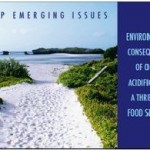
“Annual production capacity of RSPO-certified sustainable palm oil jumped over the 3 million tonnes mark last month, showing the steepest increase thus far since certification began in August 2008,” according to the Roundtable on Sustainable Palm Oil (RSPO).
With current global palm oil production projected at around 46.6 million tones annually, about 6.4 percent of this production is now certified as sustainable by the RSPO – up from 3.2 percent a year ago.
“This really shows that some palm oil producers are working hard to make certified sustainable palm oil a world standard,” said Cherie Tan. “However, these producers account for less than 20 percent of the producers represented in the RSPO.
“All RSPO producers must commit to progress, and to adopt time-bound plans towards certification.”
WWF released the Palm Oil Buyers’ Scorecard in October 2009 showing that the majority of European palm oil buyers were failing to buy certified sustainable palm oil, despite its availability and the previous commitments by many companies to purchase it. WWF will release its next edition of the Scorecard in the last quarter of 2011.
So far this year, about 60 percent of the sustainable palm oil produced has been bought, the RSPO said. In 2010’s first quarter, the overall market uptake of sustainable palm oil was 95 percent, according to the RSPO.
This represents a positive commitment by a handful of European buyers, where buyers are more responsive to environmental and social issues, WWF said.
But similar actions need to be taken by more palm oil buyers in Europe, as well as in other markets, particularly China and India, which are the two largest consuming markets of palm oil. Those two markets represent 31 percent of total consumption in 2010.
China and India have the potential to exert massive footprints on the areas where palm oil is grown and produced, Tan said.
“Transforming the global palm oil market cannot be realized unless the most influential companies in China and India move toward sustainability,” Tan said.
The growing demand for palm oil is adding to the already severe pressure on the world’s remaining rainforests. The loss of forest in Indonesia is threatening the survival of species such as the orang-utan, the Sumatran tiger, rhino and elephant.
Forest loss and the draining of peatlands for palm oil plantations is also contributing to climate change and displacing local people who rely on the forest for food and shelter.
Palm oil is one of the world’s fastest expanding crops, with significant growth in Southeast Asia as well as West Africa, Papua New Guinea and South America.
It is because of threats like this that WWF worked with other NGOs and the palm oil industry to set up the Roundtable on Sustainable Palm Oil (RSPO) in 2003. Certified Sustainable Palm Oil has been available since November 2008 and provides assurance that valuable tropical forests have not been cleared and that environmental and social safeguards have been met during the production of the palm oil.
This week’s figures come ahead of the Roundtable’s 8th Annual meeting, which will be held November 8-11 in Jakarta, Indonesia.
Click here to know more about WWF’s Palm Oil Buyers’ Scorecard.

About WWF
WWF is one of the world’s largest and most respected independent conservation organizations, with more than 5 million supporters and a global network active in over 100 countries. WWF’s mission is to stop the degradation of the earth’s natural environment and to build a future in which humans live in harmony with nature, by conserving the world’s biological diversity, ensuring that the use of renewable natural resources is sustainable, and promoting the reduction of pollution and wasteful consumption. For more information, visit wwf.panda.org.
Source: WWF Press Release dated October 8, 2010.














